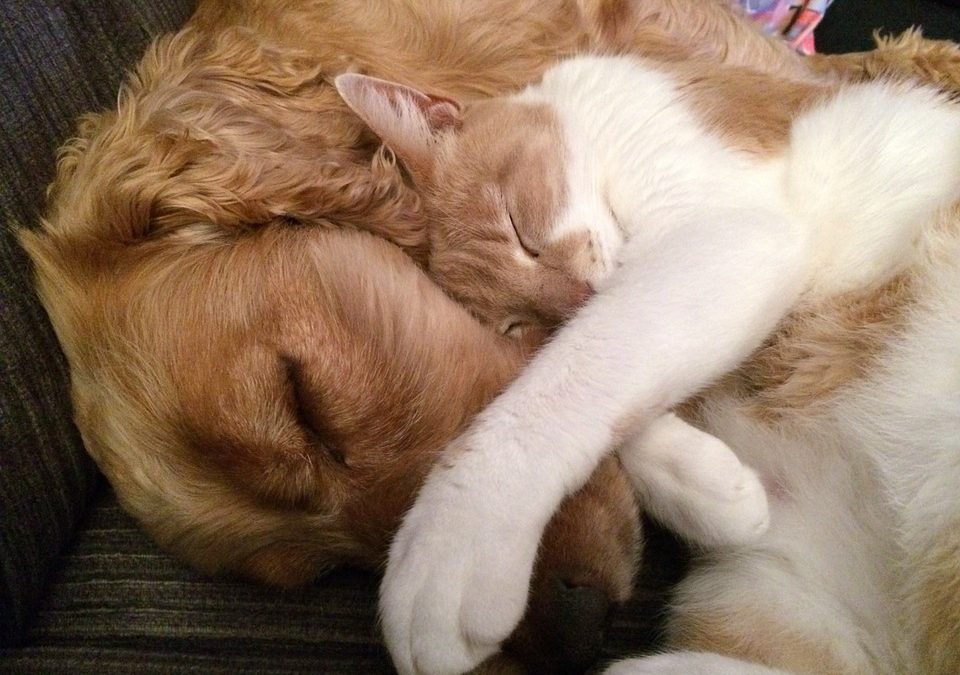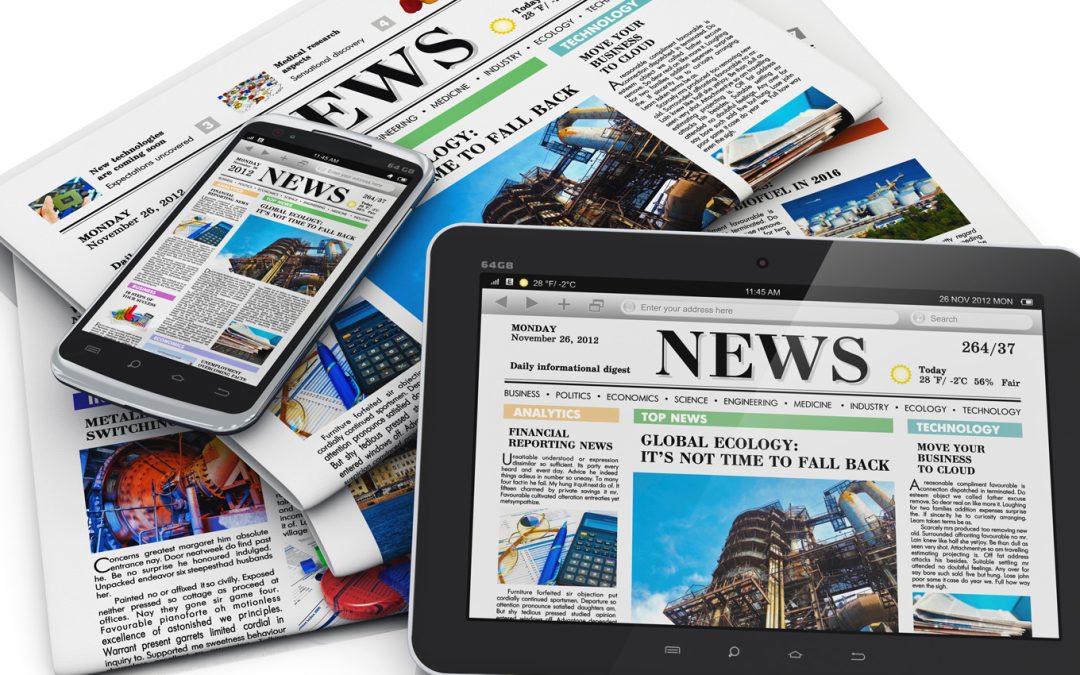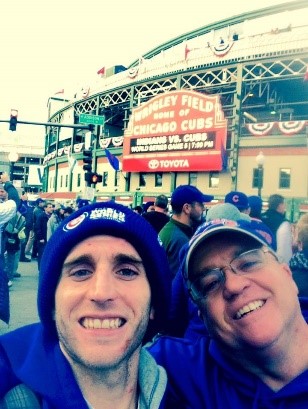
by Lisa Chernikoff | Feb 8, 2017 | Blog
I always get excited about the first month of a new year. January is like back-to-school season for grown-ups. It’s the ideal time to rethink your current way of doing things and to consider abandoning the status-quo for a fresh, new approach. Especially when it comes to the relationship between your PR, marketing and sales teams.
While we’re not advocating leaving behind what has made your team successful, we are advocating tossing out what’s keeping your team from achieving even more success. While we’re not advocating leaving behind your long-term strategy, we are advocating breaking down the silos that limit that strategy from being even more effective.
One of those limiting factors is managing your public relations, marketing and sales teams as separate entities. Whether you’re at a startup or a large corporation, you’re likely losing both dollars and deals by not harnessing the power of an integrated approach. In fact, we believe that PR can be your sales team’s biggest asset, to use on an ongoing basis or to leverage when times are tough.
But this is also a cautionary tale. When handled poorly, asking your sales team to use PR can be off-putting to your colleagues in sales and to their prospects. If you’re not thoughtful and deliberate in your approach, it can go quickly go awry.
That’s why we’re sharing four tips to help you get started:
-
- Start slow and be smart: Bombarding your sales team with too much information is always a recipe for disaster. But that is especially true when it comes to press releases or articles items they may be less familiar with than PowerPoint slides or marketing slicks. While it’s tempting to start off by sharing the highlights of your PR efforts from the last year, and then to start funneling the sales team every press release and article moving forward, it’s simply not the smartest approach. Similarly, just giving your sales team access to a shared folder of PR materials and saying, “use this stuff,” is ineffective. Most of the sales reps won’t do it, and others will likely do it very wrong, which is even more problematic.
- Remember your audience: You must choose your PR content wisely to get buy-in from the sales team. In addition to selecting items that are timely and relevant, it’s critical to think about their audience and end goals. The big idea is that communicating with prospects is vastly different than communicating with the media. For example, do sales prospects want to read a press release about an award that the company earned? Probably not. It’s better to share press coverage about that award from an industry publication because seeing an article in Healthcare IT News, rather than the “News” section of your website, increases the company’s credibility more than any self-issued release. Another great example is providing a client case study article for your sales team, and then letting them know that client quoted in the article is available for a reference call or to answer questions via email. Even though most prospects will not take you up on that offer, it creates instant credibility in their eyes, and puts sales reps one step closer to a signature on the dotted line.
- Provide guidance on the message: Keeping the audience top-of-mind helps you deliver the right message to your sales team, and helps them to deliver the right message to their prospects. Writing clear, concise emails to communicate with your sales team is vital. Many of them are traveling and skimming emails quickly on their phones. They may prefer to view articles as links, rather than by opening attachments. Understanding these preferences and adapting as needed is key to forging a partnership and facilitating their success.It’s equally important to help streamline their outreach for the PR materials you’re providing. Otherwise, your good intentions can be misconstrued as creating extra work. Having that message formulated and ready to go makes the outreach much more actionable for busy sales reps. We recommend providing an email template that enables them to easily copy and paste the information, and add a few personalized touches. Copy, paste, tweak, and send. Task completed!To take that idea further, some reps like when communication is sent on their behalf via a marketing automation tool like Pardot or Hubspot. If you have the time and resources to make this a reality for your team, it’s incredibly valuable. The only precaution here is making sure that the team is informed about the automated process so they don’t duplicate communications, or act confused when a prospect mentions the email that came from them.
- It should be a two-way street: Lastly, we recommend establishing a regular cadence for communication with the sales team so they know what to expect from you and when. There will always be unanticipated items that don’t fall within the neat confines of these rules but those can be the exception, not the rule. Combining that email communication with a recurring meeting increases your odds for success. While nobody wants to have more meetings, they are the most effective forum for two-way communication between teams, when they are well managed with a set agenda. The simple act of showing up and presenting yourself as a resource to the sales team, and then welcoming their feedback is greatly appreciated. Ideally, their feedback can provide new ideas and help inform your PR strategy moving forward. So, they’re winning deals and you’re winning too. And isn’t that what our work is all about?

by Marcia Rhodes | Feb 1, 2017 | Blog
Many companies hire PR agencies because they want to make the news, i.e., see their stories splashed on the front pages of USA Today or the Wall Street Journal or featured in a top-tier technology publication. Such a media hit rarely happens overnight, as the bar for a solo feature profile is incredibly high. To put this into perspective, even Steve Jobs had to patiently wait a few years before he became the story.
A PR colleague who used to work for Regis McKenna (Apple’s PR agency of record in the 80s) recalled a meeting in which Jobs asked when she would get him on the cover of Fortune. She answered with brutal honesty. Jobs in turn hurled a glass of water at her. He did call her the following morning to apologize and they continued to work together. And, as you know, in his lifetime, Jobs graced not just magazine covers but books, movies and documentaries.
So if you’re not Steve Jobs and you’re not the story, what’s the next best thing?
Pitch a bigger story
News outlets seek stories with broad appeal and meaning, which will discount most pitches about CEOs and company missions. Instead, craft your pitch around an interesting development in your field that’s happening and not enough people are talking about. A very effective strategy here is to conduct a survey and then report the results. Amendola client Health Catalyst did that last year, garnering considerable coverage. Or, pitch a story based on a larger societal trend or current news event, provided you can make a direct connection to it and offer up one of your company’s thought leaders to weigh in.
Yes, your company and mission can be a facet of the above pitch types, but tread carefully. The goal at this point is to get the process going, become a part of the story and build your profile as a valued source. Think of your company’s media career as that of an actor who is steadily building up his or her credentials, in one increasingly larger role after another. Over time, more audiences become aware of the actor. If the roles are in quality, interesting productions, the audience’s interest and like of the actor will grow as well.
Let your client (the end-user) take center stage
Oftentimes editors are more interested in the end user, not the vendor. They don’t want to report about software, but actual use cases, as evidenced by this article in Network World. Originally, we pitched a broad story about private healthcare data being stored on public clouds. This was enough to pique the interest of a tech reporter at Network World, who then asked to speak to a hospital CIO about the risks and benefits of storing sensitive information on public clouds. The reporter immediately saw the need for a sidebar about a HIPAA-compliant cloud and ended up quoting our client extensively in it.
So you see, being a sidebar or a part of a bigger story are just a couple of ways to prime the pump on your way to being THE story. You just need the guidance of seasoned PR professionals to help make it happen. We stand ready to help only non-water throwers, please.

by Tim Boivin | Jan 25, 2017 | Blog
The Associated Press named the Cubs winning the World Series as the top sports story of 2016. Aside from the fact that Captain Obvious must have been moonlighting for the AP sports department this year, there are two critical lessons that PR strategists can take from the Cubs championship season to play winning PR.

The author (right) with his son Jeff outside Wrigley Field before Game 5 of the 2016 World Series. Cubs were down 3-1 at this point but came back to win the Series 4-3. They had a plan, and stuck to it.
Have a plan and stick to it
When Theo Epstein became President of the Cubs, he was upfront with the fans. He said he had a plan but the fans would have to be patient. He was confident it would work. For fans (like me) of a team that at the time had gone more than a century since last winning the World Series, that was a big ask.
But Theo stuck to his plan, as he sought to build a “foundation of sustained success.” He focused on building the pillars for future long-term success around younger players the team could develop in their own image, such as Kris Bryant, Anthony Rizzo, Addison Russell, and Javier Baez.
A team built with the compass of a guiding philosophy that everyone buys into has a much greater likelihood of winning the World Series. And so it is in PR.
In the haste to generate immediate leads for the sales team, a PR plan is slapped together with lofty and often unachievable short-term goals Page 1 story in the Wall Street Journal, interviews on CNBC or Fox Business News, feature in the New York Times. But without first building the PR plan basics and getting everyone on the team to buy into the goals, those lofty aspirations will remain out of reach, especially if you are starting from a position far back in the standings of your industry.
Basically, you’re trying to hit an 8-run homer to take the lead when you are behind 7-0 in the first inning, instead of think about how to move runners from base to base within your integrated marketing plan to put (and keep the) pressure on to take the lead in your market.
Instead of swinging for the PR fences, start first by looking to hit some singles and doubles. Understand your priorities, where your fans (your prospects and customers) are, what challenges they have, what will interest them. Then build a strong content lineup that gets and keeps them circling the basepaths with you as they tap into your bench for your depth of industry knowledge as they make their purchasing decisions. That’s a proven winning PR strategy.
BUT Adjust on the fly
The Cubs went through some tough times during Theo Epstein’s early years running the club. They lost 101, 96 and 89 games his first three years, as the team looked to unload the bad attitudes, the bad contracts and the bad fundamentals that had jinxed the team for decades. They were progressing, albeit slowly, and adjusting ever so slightly on the fly only when it made sense.
Then Joe Maddon became available to manage the team. Maddon was a proven winner who worked with young players throughout his tenure in Tampa Bay, making repeat trips to the playoffs against much bigger-market teams with much larger payrolls, so the Cubs jumped at the chance to bring him in.
They also added several playoff-proven veteran pitchers, even though their plan focused initially on young hitters. The time was right to go for it all. They were winning, but they adjusted on the fly and got even better.
That’s what your PR team needs to do as well. There will be a lot of swings and plenty of misses as you look to see what scores with your prospects, but once you start making contact with the ball look to adjust the program to get even better. The unique buying personas who may be interested in your solutions may not swing at a webinar, but they may subscribe to your blog or pay attention to a particularly insightful infographic.
Then start going for extra bases with more exclusive, deeply researched thought leadership pieces placed in major healthcare industry trade publications, or white papers distributed as part of an integrated digital marketing campaign. You may want to build on your winning streak with videos or a serial ebook that takes those leads being generated and keeps them coming back for more and more compelling content.
Keep adding to your PR program based on what’s working, and don’t be afraid to trade off something that isn’t working for something new.
Extra Innings
With PR, like any sport, practice makes perfect. But along the ways, bad things can and will happen. Your executive team can lose a key player, your organization may face a communications crisis due to a disgruntled ex-employee or dissatisfied customer, or an industry analyst may criticize your solutions.
Bad things happened to the Cubs, too, late in the game against the Indians. The Cleveland team came from behind to tie the score, sending the game into the 10th inning tied.
That’s when the most disappointing player on the Cubs, Jason Heyward, stepped up during a rain delay and reminded his team how good they were, that they were ready for what happened to them. And that they could win. And they did. The World Series. In my lifetime. I can die a happy man.
By building your PR plan to be fundamentally strong, by not being afraid to try different things to see what works, by leveraging the depth of knowledge on your bench to create strong, compelling content you too can be World Champions, in PR.

by Todd Stein | Jan 11, 2017 | Blog
Why should you write a book? Most busy tech executives have a hundred good reasons why they can’t spare the time for books. Their PR advisers may be tempted to concur since PR performance is judged largely on the quantity of placements secured. After all, why spend months writing one 80,000-word book when you could write 100 800-word articles for a variety of online publications?
Yet a book’s value exceeds that of even dozens of articles. With a book, you can dive into your topic in much more detail than you ever could with online content. Sure, it might not sell but sales aren’t the point: books are tools for establishing you and your company as thought leaders. They’re magnets for relationship building. An expert who is confident and knowledgeable enough to set her expertise in stone with a book will win instant credibility in the eyes of potential partners, clients and customers.
Books also achieve a few very important goals in PR:
- Books are assets that you can share with brand advocates, customers, prospects, investors, and industry stakeholders.
- Books can attract other opportunities to you and your company. Conference organizers, for instance, are much more likely to give a keynote to the author of a respected book even if it doesn’t sell well than to a book-less competitor.
- A book can build trust by positioning your company as having a knowledge-based environment, rather than one focused on sales alone.
The key to making the most of a book is good promotion. At Amendola, while we don’t specialize in book promotion, we’ve learned over the years how to augment the distribution and promotion efforts of book publishers to drive PR value.
Below is a sampling of the tactics we use in helping our clients draw attention to their books and leverage them for relationship building:
- Send the book to key journalists and bloggers and request a book review (ideally) as well as offering the author for an interview on the book’s topic
- Pitch the author as an expert on the topic, with the book as proof of their expertise. Broadcast media love interviewing authors with new ideas.
- Do a Google Hangout with the author to promote the book
- Run a Tweetchat with the author leveraging a major partner hashtag to drive attendance
- Turn the book chapters into a webinar series, with each chapter or section a separate webinar. Give the book away as enticement to register for the webinar.
- Turn the book into blog posts: one for each chapter or section, and link to the book at the end of each post
- Arm all salespeople with several hard-copy versions of the book as leave-behinds, or use book giveaways to drive a Salesforce email campaign to prospects in their territories
- Hand out the book at all events where you exhibit, as well as at your end-user conference
- Email the book to attendees at webinars, trade shows or seminars as a follow-up
- Write a LinkedIn status update about the book and post a link to it in groups where prospects congregate.
- Pull out keys facts or items of interest from the book and tweet those on Twitter with a link to the book and a popular related hashtag
- Include the book in your email signature, with a link to download it for free.
If this short list helps convince you to write a book, give us a shout. We can help.

by Heather Caouette | Jan 4, 2017 | Blog
Word of mouth is arguably the most efficient and beneficial form of marketing. A recent Nielsen’s Harris Poll Online found that more than 80% of Americans seek recommendations when making any kind of purchase. Also, a Nielsen’s Trust in Advertising report showed that 84 percent of consumers say they value recommendations from friends and family above other types of advertising. Most people trust their peers more than corporate advertising, so hearing the virtues of your solution from a colleague will go far in establishing your credibility.
What does this information mean for your business and how do you incorporate word of mouth into your overall marketing strategy?
Nurture Happy Customers
Happy customers require a solid solution, first and foremost. Addressing the vulnerabilities of your product and services will increase your customers confidence in your company, helping develop customer advocates and extending word of mouth. Many people are happy to be an expert and discuss how they have solved a problem. By delivering a solid solution, exceptional customer service and conducting business as a true partner, customers will be open to acting as brand ambassadors. Build and engage a captive audience of your customers, partners and thought leaders.
Communicate to Your Customers
Collaborative relationships offer benefits to both sides. To have customers and prospects believe you are on their side, it is essential that marketing efforts speak to their motivations. Regardless of how beautifully crafted your campaign or message is, any project that does not speak to what influences your customer will fall flat. What keeps your clients up at night? What inspires them? You need to understand these motivators before you can make the link to how your offerings can help.
Simplify your messaging for the benefit of all involved. Someone outside of your company is not as immersed in the key take-aways as your executives. They will be asked about or offer information about your company, communicating the points they believe. Clear, concise messaging will make it easier for your customers to convey the benefits you want others to understand.
Make Their Voices Heard
You have happy customers who are willing to share their experiences. Now what? These stories and successes should be shared where people can learn from them. This can be through a variety of channels, including case studies, media interviews, social media interactions, presentations at tradeshows. The point is to have your customer’s voice heard where potential prospects and industry influencers could be listening. Having your success stories out there also keeps them alive long after they are told.
Create Targeted Campaigns
Not all messages will resonate with everyone and not all customers are created equal. Segmentation will vary depending on your company and what matters to your customers. Factors can include location, industry, customer size, solutions they are using or problem they are trying to solve. The audience should be able to relate to the customer’s experience. Match the client and message to the correct audience for maximum return.
Pick the Correct Channel
Similar to all customers not created equal, neither are channels. Businesses are made up of people that are using sites such as Facebook, Twitter, LinkedIn and Instagram. You need to get your message to the people where they are and where they will be receptive to hearing your customer’s story. That said, tread carefully to put your efforts in the channels that can offer the greatest reward as some may be a better fit than others. A channel that makes sense for one industry may not work for another. Also, focus on the message and desired outcome and not the trendy tool.
Ensure your online presence is optimized for mobile channels. According to an April 27, 2016 post by Smart Insights, mobile use grows an average of 58% year over year. Viewers should be able to move seamlessly between devices and have a consistent experience regardless of whether they find you on a desktop, tablet or phone.
Word of mouth marketing can be a cost-effective and credible way to extend your voice. These steps will increase the value of these efforts. Now, get your customers achievements heard!
Page 22 of 32« First«...10...2021222324...30...»Last »





